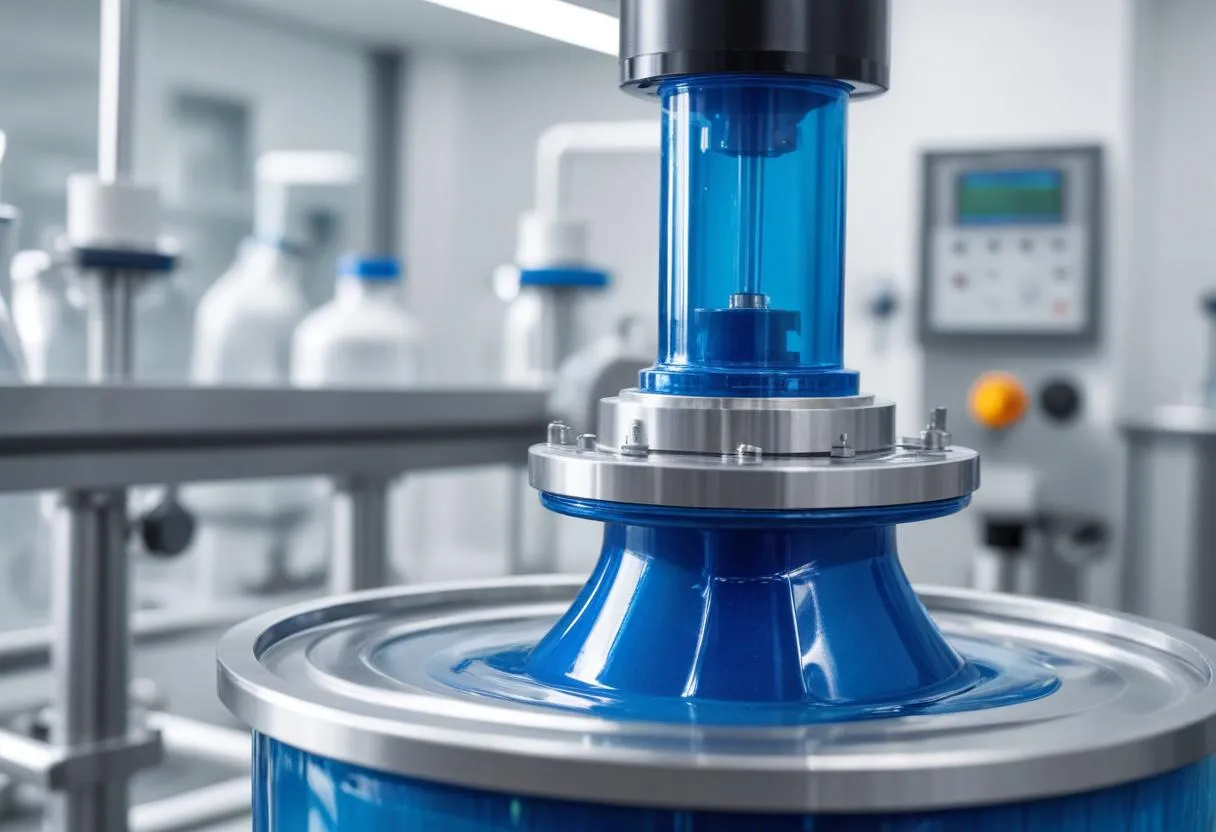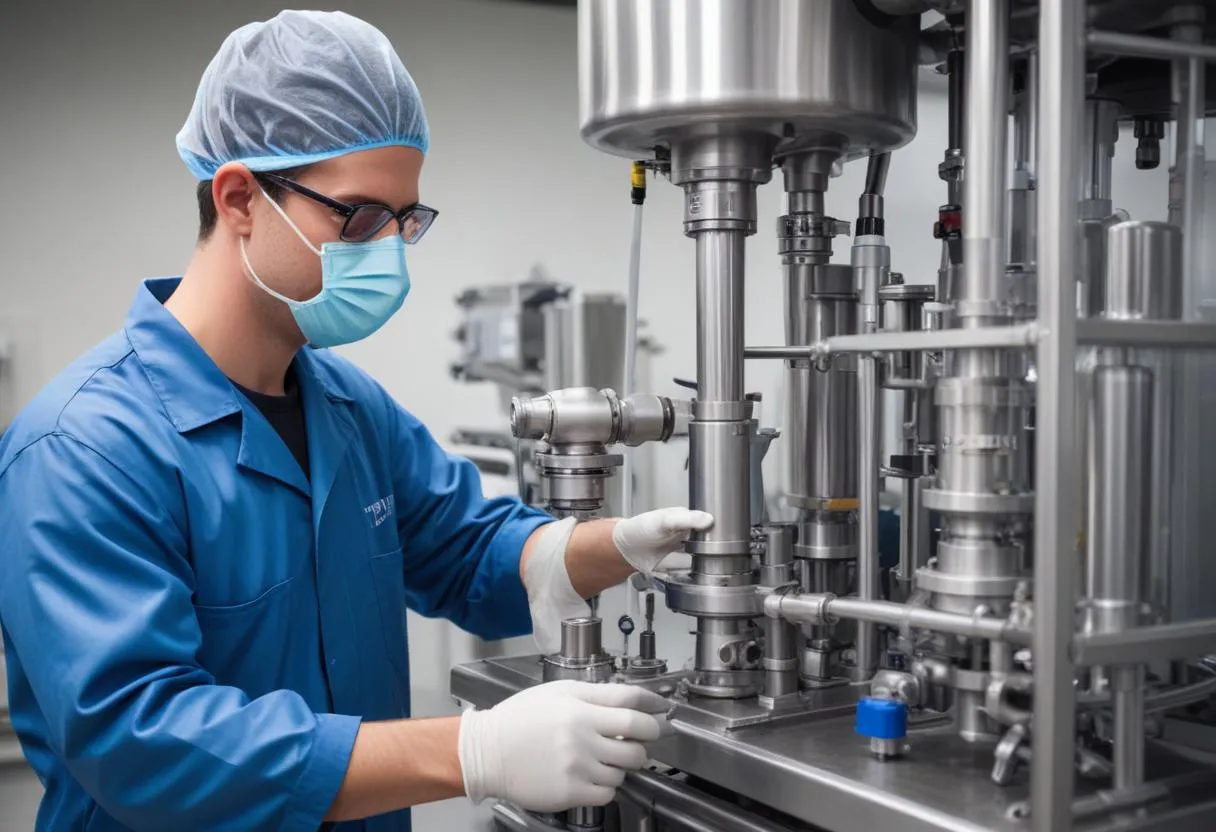 In the pharmaceutical industry, pumps play a pivotal role in the handling and processing of liquids and gasses. The choice of pump type is critical as it affects the efficiency and safety of the manufacturing process. The main types of pumps utilized in pharmaceutical operations include centrifugal pumps, positive displacement pumps, peristaltic pumps, and diaphragm pumps, each catering to different requirements based on their unique operating mechanisms and advantages.
In the pharmaceutical industry, pumps play a pivotal role in the handling and processing of liquids and gasses. The choice of pump type is critical as it affects the efficiency and safety of the manufacturing process. The main types of pumps utilized in pharmaceutical operations include centrifugal pumps, positive displacement pumps, peristaltic pumps, and diaphragm pumps, each catering to different requirements based on their unique operating mechanisms and advantages.
Centrifugal Pumps: These are the most commonly used pumps in the pharmaceutical sector, known for their suitability in processes that require high flow rates and efficient liquid transfer. They operate using a rotating impeller to create centrifugal force, pushing the fluid outward and increasing its velocity. This type of pump is ideal for handling large volumes of water and other fluids at relatively low viscosity.
Positive Displacement Pumps: As opposed to centrifugal pumps, positive displacement pumps move a fixed amount of fluid with each pump cycle. This category includes gear pumps, lobe pumps, and piston pumps, which are particularly useful for dosing and precise volume control essential in pharmaceutical applications. They are capable of handling a wide range of viscosities and pressures, making them versatile for various formulations.
Peristaltic Pumps: These pumps are favored in pharmaceutical processes for their ability to ensure purity and sterility. Peristaltic pumps operate by compressing and relaxing a flexible tube, the only part of the pump in contact with the fluid. This design minimizes contamination risk, making these pumps ideal for aseptic processing.
Diaphragm Pumps: Known for their reliability and good containment, diaphragm pumps use a flexible diaphragm that moves back and forth to create a temporary chamber, which draws in and expels fluid. These pumps are highly effective for transferring hazardous or corrosive chemicals, as the fluid does not come into contact with moving parts of the pump.
Table: Pump Types and Applications in Pharmaceutical Manufacturing
| Type of Pump | Key Characteristics | Common Applications |
|---|---|---|
| Centrifugal | High flow rate, low viscosity handling | General fluid transfer, bulk handling |
| Positive Displacement | Precise volume control, wide viscosity range | Dosing, high-viscosity fluids |
| Peristaltic | Minimum contamination, aseptic processing | Sanitary applications, sterile products |
| Diaphragm | Good for hazardous materials, no leakage | Chemical handling, high-purity applications |
Choosing the Appropriate Pump: The selection of the right type of pump in pharmaceutical manufacturing is crucial. Factors to consider include the chemical nature of the fluids, the required flow rates, the necessity for sterile conditions, and the physical properties of the liquids or gasses. The integration of these tools into pharmaceutical processes not only impacts production efficiency but also compliance with stringent industry standards, ensuring safety, efficacy, and quality of the pharmaceutical products.
Integration of pumps in drug formulation and production
Pumps are integral not just for the transfer of materials but also for the precision and control required in the formulation and production stages of pharmaceuticals. Most pharmaceutical processes involve complex synthesis involving multiple chemicals and require the delivery of precise volumes at regulated flow rates to ensure product consistency and integrity. The integration of pumps at various stages can be understood as follows:
1. Raw Material Handling: At the very beginning of the production cycle, raw materials need to be transferred from storage units to the production area. Pumps such as centrifugal and diaphragm pumps are used for transferring these materials efficiently while maintaining the integrity of the materials.
2. Compounding and Mixing: In the compounding phase, precise amounts of different ingredients are blended. Positive displacement pumps stand out in this phase for their ability to deliver exact volumes of viscous fluids, crucial for maintaining the correct ratios prescribed in the formulation.
3. Formulation: This very critical phase involves the actual creation of the pharmaceutical product. Depending on the form of the medication (e.g., liquid, gel, or ointment), specific types of pumps such as peristaltic and lobe pumps are used. The sterility and purity are paramount here, making pumps that prevent contamination—like peristaltic pumps—highly preferred.
4. Filling and Packaging: The final product needs to be packaged, typically in vials, syringes, bottles, or pouches. The filling process requires high precision to ensure that each package contains the correct amount of the pharmaceutical product. Here, peristaltic pumps are valued for their accuracy and minimal risk of contamination.
5. Waste Management: After the primary processes are complete, handling waste products also requires the use of pumps. Diaphragm pumps, due to their capability to handle corrosive and hazardous chemicals without leaks, are often used to manage waste safely.
Facilitating these operations is not just about having the best pump technology but also integrating them effectively within the production systems. Pharmaceutical manufacturers utilize advanced control systems to operate these pumps optimally. These control systems help in maintaining flow rates, pressure, and operational sequences, enabling consistent quality control throughout the production process.
The integration of pumps is also highlighted by the setup and configuration used within manufacturing plants. Below is an example of how pumps are typically configured in a drug formulation setup:
- Input Control: Sensors and meters connected to the pumps ensure the accurate measurement of flow and pressure, adjusting pump speed automatically.
- Feedback Systems: Feedback mechanisms provide real-time data on the operation, helping in proactive maintenance and operational adjustments.
- Automated Cleaning Systems: Especially with pumps like peristaltic and diaphragm pumps, automated cleaning-in-place (CIP) systems ensure that the pumps are cleaned thoroughly without dismantling, maintaining product and process integrity.
In conclusion, the sophisticated integration of pumps within pharmaceutical manufacturing not only supports the logistical aspects of production but also enhances the capacity to maintain stringent quality and safety standards required in the pharmaceutical industry. These pumps, when combined with advanced control and automation technologies, create a robust environment conducive to the high-quality manufacturing of pharmaceutical products.
Maintenance and compliance issues for pharmaceutical pumps
 Maintaining pharmaceutical pumps is crucial not only for the longevity of the equipment but also for ensuring consistent product quality and compliance with regulatory standards. The maintenance strategies for pumps used in pharmaceutical manufacturing must address both routine upkeep and compliance-related inspections to adhere to guidelines set by authorities like the FDA and EMA.
Maintaining pharmaceutical pumps is crucial not only for the longevity of the equipment but also for ensuring consistent product quality and compliance with regulatory standards. The maintenance strategies for pumps used in pharmaceutical manufacturing must address both routine upkeep and compliance-related inspections to adhere to guidelines set by authorities like the FDA and EMA.
Preventative Maintenance: This involves regular checks and service to prevent breakdowns before they occur. Common tasks include lubrication of moving parts, replacing worn components like seals and bearings, and checking for leaks. This proactive approach helps in minimizing downtime and preventing contamination risks, crucial for maintaining sterile manufacturing environments.
Regulatory Compliance: Compliance with standards such as cGMP (Current Good Manufacturing Practices) is mandatory. Pumps must be calibrated and validated according to precise specifications to ensure they operate correctly under all processing conditions. Documentation of these processes is essential as it provides proof of compliance during audits.
Table: Key Maintenance and Compliance Activities for Pharmaceutical Pumps
| Maintenance Activity | Description | Compliance Relevance |
|---|---|---|
| Routine Inspection | Check for mechanical integrity and operational efficiency | Ensures equipment reliability essential for product quality |
| Calibration | Adjustment of pump settings to match specified parameters | Critical for process validation under cGMP standards |
| Part Replacement | Replacing parts like seals and rotors before they fail | Avoids unscheduled downtime and potential contamination |
Breakdown Maintenance: Despite best efforts, unexpected failures may occur. Having a responsive breakdown maintenance plan is critical. This includes the ability to quickly repair or replace pumps without disrupting the entire production line. In the pharmaceutical industry, delays can lead to significant financial losses and compliance issues, making efficient breakdown management crucial.
The use of advanced diagnostic tools such as vibration analysis, thermal imaging, and acoustic monitoring can help predict and identify pump issues before they lead to failure. These tools allow maintenance teams to focus on potential problem areas, thereby optimizing the reliability and efficiency of pump operations.
Training and SOPs: Equally vital is the training provided to the maintenance staff. Comprehensive training ensures that all team members understand the intricacies of each type of pump and can perform maintenance in compliance with both safety standards and production demands. Standard Operating Procedures (SOPs) must be followed meticulously to guarantee that all operations are consistent and lead to high-quality outputs.
Challenges in Maintenance: The integration of new pump technologies often requires updates to maintenance protocols and training. Additionally, pharmaceutical pumps working with corrosive or highly potent compounds pose specific challenges in maintenance to prevent material degradation or exposure.
- Risk Management: Implementing risk-based maintenance strategies to predict and address the most critical maintenance needs.
- Health and Safety: Ensuring safety protocols are rigorously followed to protect maintenance staff from exposure to harmful substances.
- Environmental Considerations: Managing waste and emissions from maintenance activities to comply with environmental regulations.
Effectively addressing these maintenance and compliance challenges ensures that pharmaceutical manufacturing processes are not only efficient but also aligned with industry regulations and best practices. Proper upkeep and regular compliance checks of pumps are indispensable components of the high standards required in pharmaceutical production. These activities together support the goal of delivering safe, effective pharmaceutical products to consumers.